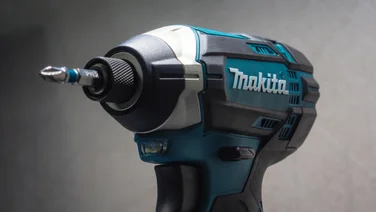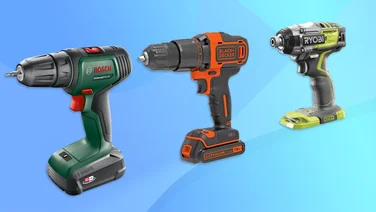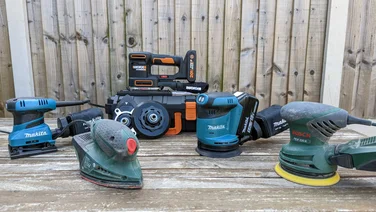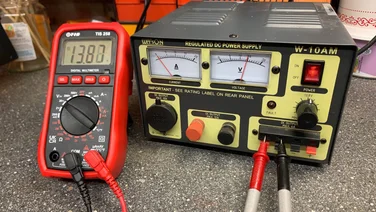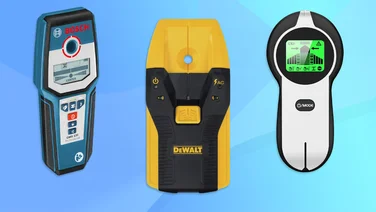To help us provide you with free impartial advice, we may earn a commission if you buy through links on our site. Learn more
- Best mitre saws: At a glance
- How to choose the best mitre saw for you
- How we test mitre saws
- The best mitre saws you can buy in 2023
- 1. Wickes 210mm Corded Compound Mitre Saw – 1800W: Best compound mitre saw
- 2. Ryobi 18V ONE+ Cordless Mitre Saw: Best cordless mitre saw
- 3. Einhell 254mm Single Bevel Sliding Mitre Saw with Stand 230V: Best sliding mitre saw

If you’re embarking on more advanced DIY projects, a mitre saw could be the most powerful tool in your armoury. They make short work of complex cuts at precise angles, and are typically suitable for wood, non-ferrous metals and plastics.
Depending on the saw you choose, you’ll be able to make straight cuts, angles, bevels and even angled bevels. Mitre cuts are achieved by rotating the saw head, and most have markings to help rotate up to 45 degrees in either direction from the centre. Bevel cuts require the sawblade tilt to the side; single bevel saws only go in one direction, while double bevel saws tilt in both directions. And a sliding mitre saw will increase the width it’s able to cut, making it ideal for larger workpieces.
Generally speaking, the more the saw can do, the more it will cost, so you need to consider what jobs you’re going to ask of it. You should also consider whether you want a corded or cordless saw – the former usually costs less, but you’ll need to be close to a power supply, while the latter are usually pricier but far more portable, though you’ll need to factor in battery life.
Finally, think about where you’re going to use it. Most mitre saws can be mounted to a workbench, but others have their own stand. The choice you make will be governed by how and where you’ll use it.
In our testing, we looked at features, general ease of use and how straightforward it was to assemble. We took into account the clarity of instructions while assessing operation, as well as its ability to cut to all the angles and bevel options available.
Best mitre saws: At a glance
- Best compound mitre saw: Wickes 210mm Corded Compound Mitre Saw – 1800W | £69
- Best cordless mitre saw: Ryobi 18V ONE+ Cordless Mitre Saw | £204
- Best sliding mitre saw: Einhell 254mm Single Bevel Sliding Mitre Saw | £200
How to choose the best mitre saw for you
Do I need a single or double bevel mitre saw?
Whether you go for a single or double bevel saw will largely be driven by cost. Double bevel saws offer the most versatility, but also come with the highest price tags. Skilled users may be comfortable simply turning the workpiece upside down, but that might be over-complicated for those taking their first steps.
READ NEXT: The best telescopic ladder
Can mitre saws cut wide materials?
The width of the material a mitre saw can cut will be governed by the size of the blade: the bigger the sawblade, the wider and deeper it can cut. Sliding mitre saws offer additional versatility as the sawblade can be pulled forwards and backwards to increase the length of the cut. This can pay dividends if you’re cutting fence posts or wider lengths of lumber.
What features do you need?
Most mitre saws will come with adjustable rear fences and clamps to ensure your workpieces are safely secured, keeping your hands clear of the blade. Pretty much all mitre saws will have a guard to cover the blade when not in use. And when they are in use, mitre saws will usually employ some kind of dust collection – usually a zip-up bag that can be emptied afterwards or a vacuum attachment.
More expensive mitre saws may feature built-in lights to make them easier to use in darker conditions, or even lasers to line up with your own pencil markings. Others have variable speeds to best suit the materials you’re cutting. However, your need for these features will generally be determined by your budget.
Does speed matter?
As a rule of thumb, the faster a mitre saw can spin, the cleaner the cut it makes. But the main factor is the type of blade you use. You’ll need to ensure any blade is the correct diameter and has the correct hole size, but the more teeth a sawblade has, the neater the cut will be. You can also choose from a number of different shaped teeth, each being suited to a particular job.
How we test mitre saws
Key to our assessment is each mitre saw’s ability to cut cleanly, quickly and easily. First, we establish the no-load speed, because the faster the blade spins, the cleaner the cut. We conduct our tests with the blade supplied with the unit. We then look at each saw’s cutting capacity – the bigger the saw, the less likely you’ll have to make reverse cuts on thicker workpieces. Then we assess how easy it is to adjust the saw head for angle and bevel cuts, and the clarity of the gauges. Saws that “notch” at 45 and 90 degrees are handy because they’re two of the most commonly used angles.
Finally, we cut a variety of pieces of wood to see how each saw performs in operation. We record the cleanness of the cut, plus the noise level of the saw before and during contact with the workpieces.
The clarity of instructions and safety advice, plus supplied tools, dust collection performance are also taken into account.
READ NEXT: The best paint for wood
The best mitre saws you can buy in 2023
1. Wickes 210mm Corded Compound Mitre Saw – 1800W: Best compound mitre saw
Price: £69 | Buy now from Wickes

Wickes’ entry in our list boasts a quality feel and a suite of features that belies its price tag. There’s a fair bit of assembly required, but the instructions are clear and comprehensive. It has a heavy base, which instils plenty of confidence if you can’t bolt it to a workbench, and has four screw holes if you can.
It’s easy to turn to establish a mitre cut – simply release the locking knob and turn using the handle. It locks in easily at 15 degree intervals, but it’s slightly trickier to find angles in between. There’s also a knob at the rear of the saw that loosens, allowing you to tilt the saw to the left up to 45 degrees – a gauge aids accuracy here.
To operate, it’s simply a case of thumbing a level to unlock the blade guard, and then squeezing the trigger. The unit is fairly loud but smooth in operation, and can cut to a 90 degree/no-bevel depth of 60mm, which should be plenty for most uses. A dust extractor bag is included, but it’s a shame there’s no storage for the allen key and screwdriver that’s required to swap sawblades and adjust the extension bars.
Key specs – Bevel capacity: 0-45 degrees; Blade size: 210mm; No-load speed: 5,000rpm; Weight: 7.5kg
2. Ryobi 18V ONE+ Cordless Mitre Saw: Best cordless mitre saw

Price: £204 | Buy now from Ryobi
As ever with tools from Ryobi’s ONE+ range, portability is the name of the game. And its mitre saw features a carrying handle, which is useful because mitre saws are notoriously bulky. While it weighs just 7.9kg (excluding the battery), it feels tough and built to last.
As a compound mitre saw, it offers the same cutting options as the Wickes unit above, but the large handle at the front makes it even easier to select your mitre angle, while bevel adjustment is made by loosening the knob at the rear of the unit. Operation couldn’t be easier – once you’ve slotted the battery into place, grip the handle, slide your index finger to the side to operate the release catch, and squeeze the trigger. It’s easily the quietest unit on test, and made short work of our cuts.
There’s adjustment for the main fence, plus a clamp which can be mounted on either side to hold your workpiece in place, and a zip-up dust collection bag (though you could also connect a vacuum). Storage for the allen key required to swap blades is a nice touch.
Key specs – Bevel capacity: 0-45 degrees; Blade size: 210mm; No-load speed: 4,200rpm; Weight: 7.9kg
3. Einhell 254mm Single Bevel Sliding Mitre Saw with Stand 230V: Best sliding mitre saw

Price: £200 | Buy now from Toolstation
If you want to keep your mitre saw off of your main workbench, then Einhell’s offering is a superb option as it includes a tough, weighty stand – which, of course, makes it the heaviest saw on test by quite some margin. It’s another single-bevel mitre saw, so you’ll have to flip your workpiece over to make the reverse cut, but the Einhell is the only saw here to offer a sliding function. As well as being satisfying to use, it also means you can cut much wider pieces.
Along with the stand, it takes a while to assemble, but the instructions are clear. And once you’re done, it’s a mitre saw that’s as big in capability as it is in size. A huge 254mm blade cuts deep, and a 310mm sliding travel allows for particularly long cuts. A laser guide is a useful addition, but is better suited to indoor use as it struggles to be seen in bright sunlight.
A thumb-operated release catch to the side of the handle and an ergonomically sound trigger make it very easy to operate, but it’s very loud – ear protection is certainly recommended.
Key specs – Bevel capacity: 0-45 degrees; Blade size: 254mm; No-load speed: 4,800rpm; Weight: 17.75kg


